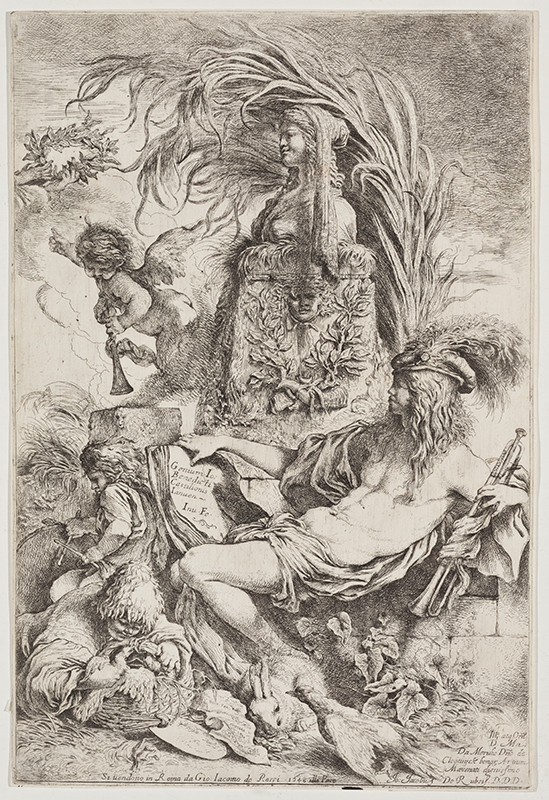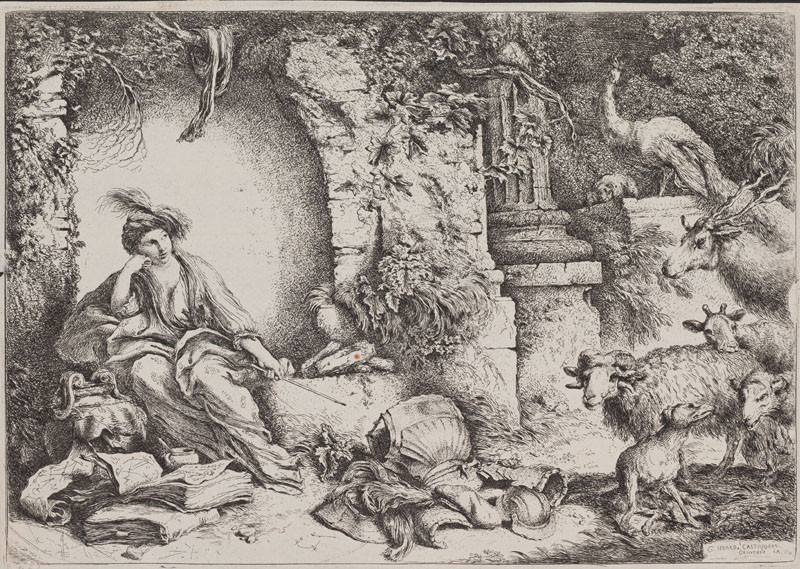
The prints of Giovanni Battista Castiglione are noteworthy for their unusual themes and reflect the artist’s interest in the motifs of vanity and transience. The artist was a great admirer of Rembrandt, which is evident especially in his treatment of light and shade, his penchant for candle−lit, nocturnal scenes and the use of a similar dense and sketchy hatching technique. The etching The Artist’s Genius can be regarded as an allegory of creativity and fame, as the personal statement of an artist who reveals his innermost doubts and ambitions. The young man personifying Genius is seated on a vine−covered base of an ancient monument, only sparsely dressed in a strip of fabric and wearing a hat with a feather on his head. He holds a trumpet and a book inscribed with the artist’s name that stress the role of the creative Genius and of inspiration and talent in the creative process. Genius is accompanied by allegorical objects, animals and figures symbolizing the artist’s prolific creativity (e.g. a rabbit and a partridge), his artistic endeavours as well as his doubts (a palette with brushes and a crumpled sheet of music), and his fame (a putto blowing a trumpet and a laurel wreath in the hands of God). The road to fame is counterbalanced by the pending storm in the upper right corner, that represents the never−ending threat of failure.

